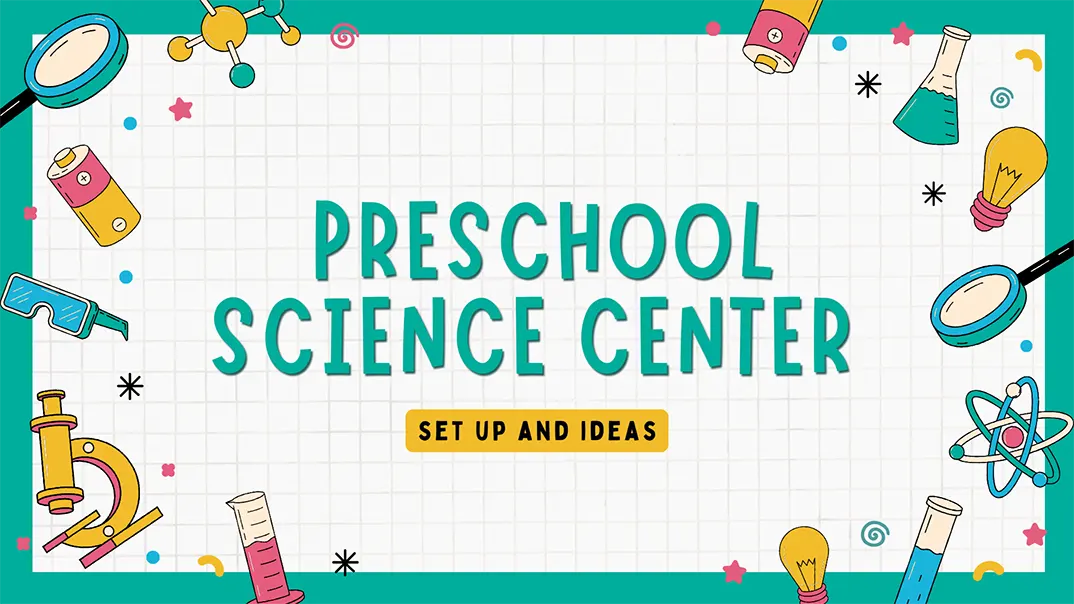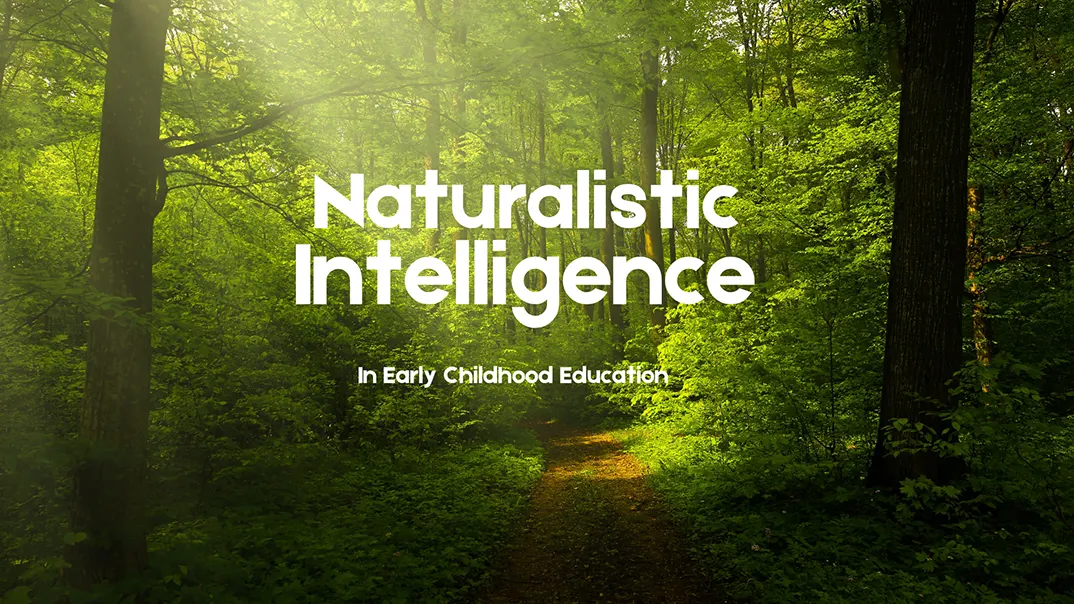Have you ever wondered how to ignite a lifelong curiosity about science in preschoolers? Do you worry about lacking innovative ideas to make the science learning experience exciting for preschoolers? Are you seeking creative, affordable, and engaging ideas to create the perfect science space for little learners?
The key to a successful preschool science center is creating an environment that fosters hands-on exploration, inquiry, and discovery. You can transform any corner into a magical world of scientific wonder and learning by carefully selecting age-appropriate materials and incorporating interactive elements.
Let’s dive into actionable tips and ideas to help you design a captivating science center for preschoolers filled with excitement, curiosity, and endless possibilities!
Why is a Preschool Science Center Important?

Exposure to a rich and stimulating environment is crucial in the early years of a child’s development. A preschool science center serves as a cornerstone in this developmental journey. It offers a unique space where young minds can begin to understand the world around them through scientific exploration. This enriches their early learning experience and lays a solid foundation for their future academic and personal growth.
What is a Preschool Science Center?
A preschool science center is an educational area within a preschool setting designed to introduce young children to the basics of science through hands-on, exploratory activities. It’s geared towards sparking curiosity and nurturing early scientific thinking. The center typically includes various materials and tools that allow children to experiment and observe natural phenomena.
Benefits of a Preschool Science Center
1. Stimulates Curiosity
Young children are naturally curious about the world around them. A preschool science center provides an environment where this curiosity can be nurtured. They are eager to learn more when seeing interesting materials like colorful crystals or a working windmill model. For example, a child might wonder how the windmill spins and start exploring the concept of wind energy.
2. Enhances Cognitive Development
Engaging in scientific activities helps in developing children’s cognitive skills. Activities such as sorting objects by size, color, or texture or predicting the outcome of a simple experiment improve their problem-solving, logical thinking, and critical thinking abilities. For instance, when children are asked to predict which object will sink or float in water and test their predictions, they exercise their cognitive skills.
3. Promotes Creativity
The nature of scientific exploration in a kindergarten science center allows children to be creative. They can devise their own ways of conducting experiments or interpreting results. For example, when given materials to build a structure that can withstand a “windy” condition (created by a fan), children will use their imagination and creativity to design different structures.
4. Improves Fine and Gross Motor Skills
Many science activities in the preschool science center require fine motor skills. Handling small objects like beads during a sporting activity or using tweezers to pick up small items helps develop fine motor control. Gross motor skills are also enhanced when children are involved in activities such as setting up a large-scale experiment that requires moving and arranging equipment.
5. Fosters a Love for Learning
By providing a fun and engaging environment for scientific discovery, a preschool science center can instill a love for learning in children from an early age. When they enjoy exploring science, they are more likely to be enthusiastic about learning in other areas.
How to Set Up a Preschool Science Center?

1. Planning the Space
The first step in setting up a preschool science center is to plan the space reasonably. This is crucial for children to carry out scientific exploration activities comfortably and efficiently. A well-planned space can create a favorable learning atmosphere for children and stimulate their desire for exploration.
Choose the Right Location
Select a quiet, well-lit corner in your classroom where children can focus on exploration and observation. Ensure enough space for children to move freely, sit comfortably, and engage in activities without distractions. If possible, the location should be near a water source, making cleanup after experiments easier.
Dividing Functional Zones
Divide the science center into different functional areas. For example, an experimental area with tables and chairs can be set up for various operations. Establish an observation area equipped with magnifying glasses, microscopes, and other tools, enabling children to observe specimens and object details closely. Also, a display area should be planned to showcase children’s experimental results, scientific discoveries, and interesting items they have collected.
2. Gathering Materials for Your Preschool Science Center
Diverse and age-appropriate materials are essential components of a preschool science center. These materials are the gateway to scientific exploration, sparking children’s curiosity and creativity while allowing them to learn through hands-on experiences. To create a comprehensive and engaging science center, consider collecting materials across three main categories: everyday items, natural materials, and scientific tools.
Everyday Items
Collect a variety of everyday items for scientific experiments and exploration. For instance, plastic bottles can be used to make water rockets, simple hourglasses, etc. Toilet paper tubes can be made into telescopes or sound amplifiers. Old magazines and newspapers can be used to make paper pulp models or explore the properties of paper.
Natural Materials
Gather natural materials from outdoors, such as leaves, branches, stones, and seashells. These materials can be used to study the morphology of plants, explore the properties of different materials, and also for creative handicrafts, combining science with art.
Scientific Tools
Purchase basic scientific tools, such as magnifying glasses, compasses, thermometers, balances, and measuring cups. These tools can help children conduct in-depth scientific exploration and cultivate their observation and measurement skills.
3. Ensuring Safety
Ensuring safety is of utmost importance in setting up a preschool science center. Preschool children are still young and have weak self-protection abilities. Therefore, it is necessary to ensure that all aspects of the science center are free from potential safety hazards. This mainly covers two key aspects: material safety and space safety.
Material Safety
Ensure that all materials used in the science center are safe and non-toxic. Especially for younger preschool children, avoid using materials containing harmful substances to prevent accidental poisoning and other situations. For some sharp or fragile items, store them properly and allow their use only under the guidance of teachers.
Space Safety
Check the safety of the space where the science center is located. Ensure the floor is dry and non-slip to prevent children from slipping and getting injured during activities. Power sockets should be installed out of children’s reach, or safety socket covers should be used. Also, the stability of furniture and equipment should be regularly inspected to prevent them from toppling and injuring children.
4. Decorating the Environment
The environmental decoration of the preschool science center has a non-negligible impact on children’s learning experience. A carefully decorated environment can create a strong scientific atmosphere, stimulate children’s enthusiasm for exploration, and help cultivate their sense of order and classification. The following will be introduced from decorating the walls and adding labels.
Decorating the Walls
Decorate the walls with science-related pictures and posters. You can display pictures of the planets in the solar system, the life cycles of animals, portraits of famous scientists, etc. These decorations not only create a strong scientific atmosphere but also stimulate children’s curiosity and desire for exploration.
Adding Labels
Add clear labels to each functional area and place where materials are stored. For example, put a sign saying “Experiment in Progress” in the experimental area and write prompts like “Observe” in the observation area. Label different materials, such as plant and mineral specimens, accordingly. This makes it convenient for children to quickly find the items they need and simultaneously cultivates their sense of classification.
Transform Your Classroom with Custom Furniture Solutions
Preschool Science Center Zones and Furniture Setup Guide
Creating a well-organized preschool science center goes far beyond simply providing materials—it’s about designing intentional zones that support hands-on exploration, structured discovery, and independent learning. Each zone within the science center aims to develop children’s scientific thinking and curiosity. The right furniture enhances function and encourages engagement, autonomy, and safety.
Below, we break down six essential science zones, including their educational value, recommended furniture, and practical layout tips to help you build an inviting and compelling science-rich environment.
1. Nature Observation Area
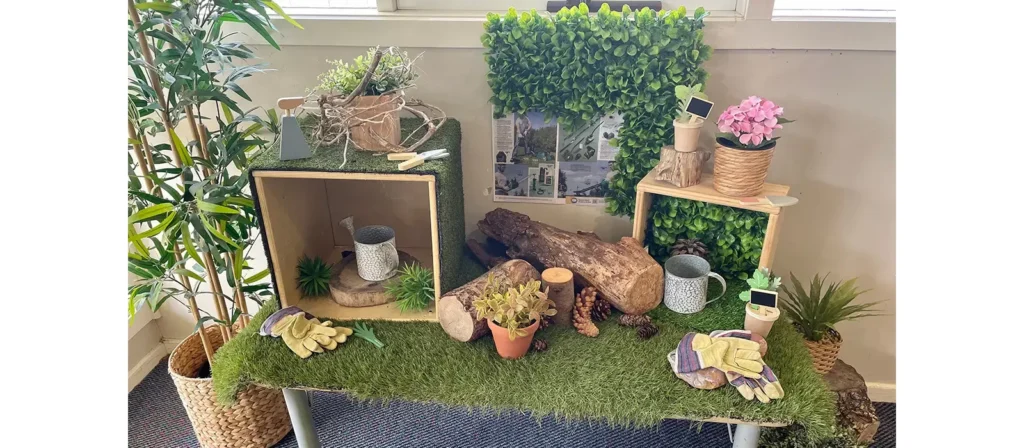
This area nurtures children’s curiosity about the natural world by allowing them to observe plants, insects, rocks, and other natural items up close. It builds foundational skills in observation, classification, and respect for living things—key components of early science education.
Recommended Furniture and Materials
- Low Display Shelf
Used for organizing and presenting natural collections like rocks, leaves, pinecones, or shells at children’s eye level. - Insect Observation Box
A clear box or bug jar with air holes and magnifying lids, allowing kids to study live or preserved insects safely. - Child-Sized Observation Table with Chairs
Provides a comfortable workspace for viewing items with tools such as magnifying glasses, tweezers, or field journals. - Tool Storage Drawer Cabinet
Keeps scientific tools like magnifiers, forceps, brushes, and measuring rulers neatly organized and easily accessible. - Mini Nature Poster Stand or Reference Book Rack
Supports visual learning with labeled diagrams, field guides, or books on plants and animals.
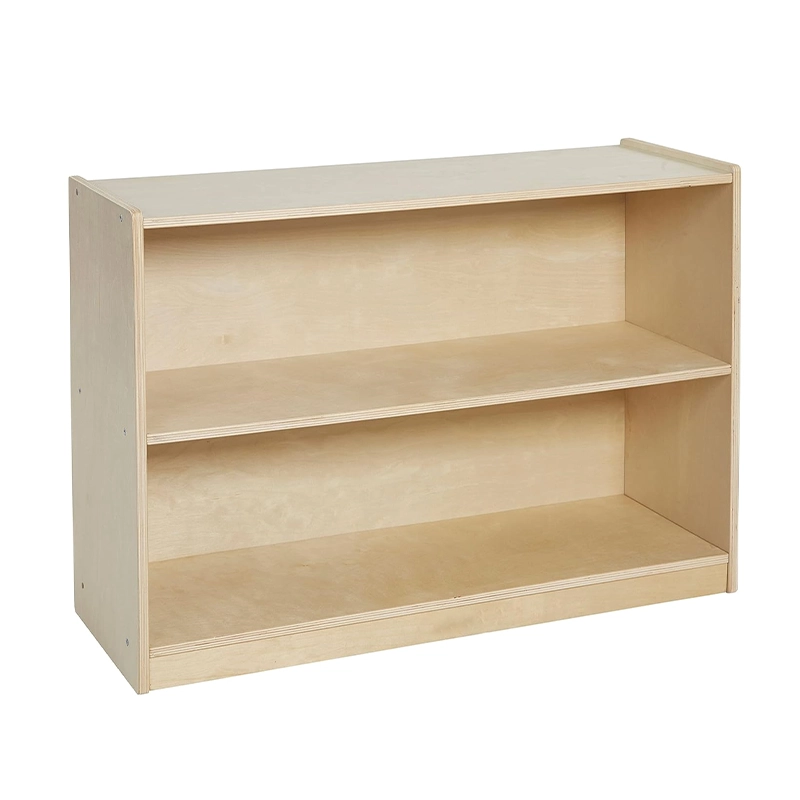
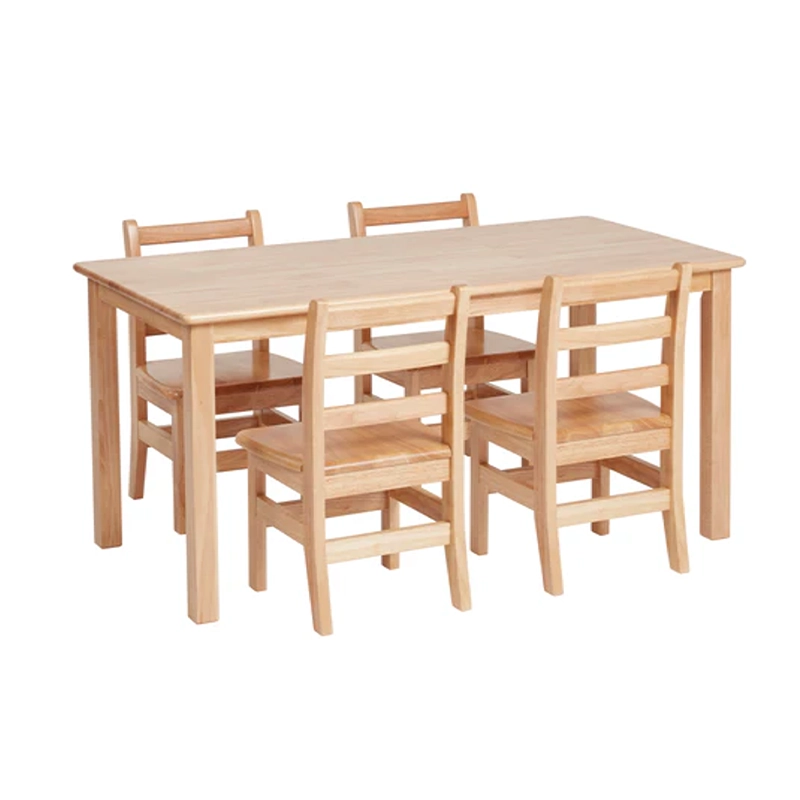

Layout Suggestions
Place this zone near a window to take advantage of natural light. Consider adding a small indoor plant garden or growing seeds in clear containers. You can create a “nature walk table” where children bring in safe, approved items from home or playgrounds to discuss. Label each display item with simple tags (e.g., “pinecone–bumpy, brown”) to support vocabulary development. Add clipboards for drawing or labeling what they see.
2. Physical Science Area

This zone introduces basic physics concepts such as force, motion, gravity, magnetism, and light. Through hands-on play, children learn how things move, why they fall, and how materials react to force or energy. It encourages prediction, cause-and-effect reasoning, and early problem-solving skills.
Recommended Furniture and Materials
- Adjustable Science Table
A sturdy table at child height where children can test ramps, weights, or building materials. Adjustable height accommodates varied experiments. - Magnetic Board Station
Wall- or easel-mounted board for magnet activities—children can test which objects are magnetic and sort them accordingly. - Ramp Set with Storage
Includes small wooden or plastic ramps with balls or toy cars, useful for exploring incline, speed, and gravity. - Light and Shadow Corner
A light panel or flashlight wall station to experiment with shadows, translucent objects, and color mixing with gels. - Transparent Storage Bins
For organizing all physics tools—balls, magnet sets, pulleys, weights, gears—into themed containers that are easy for kids to grab.
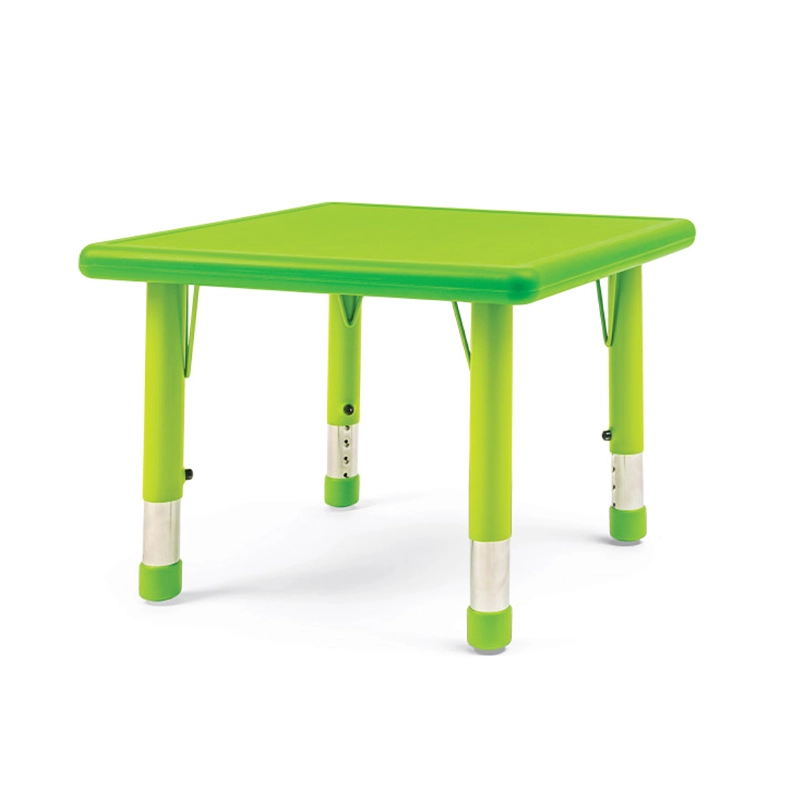
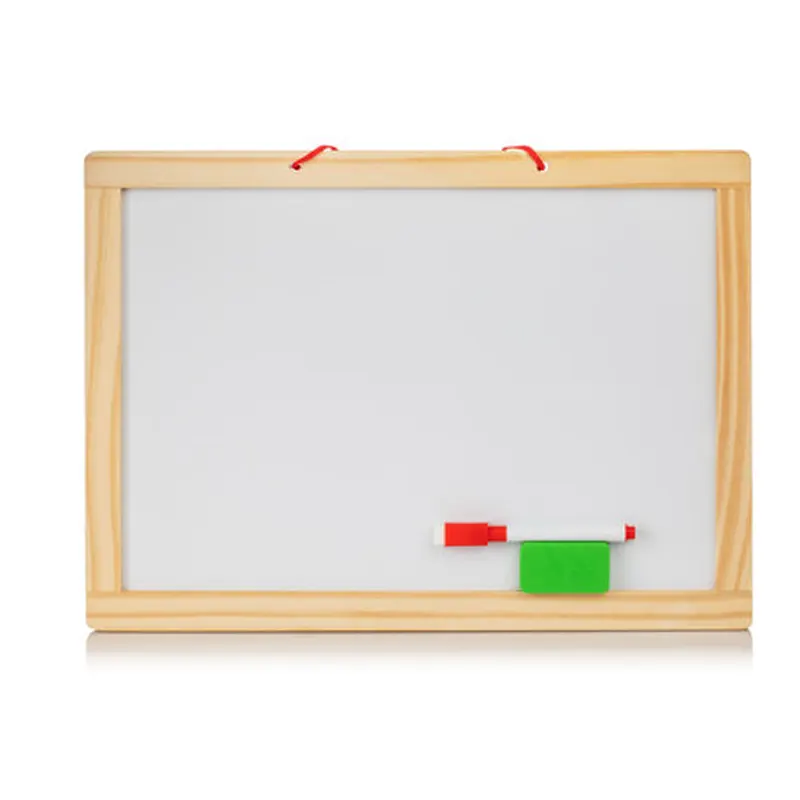
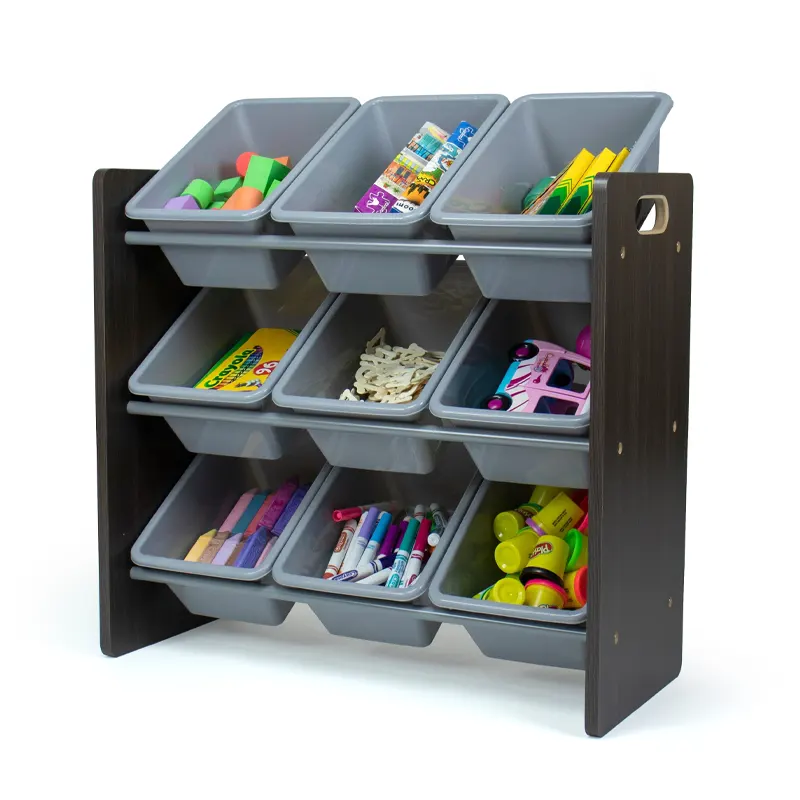
Layout Suggestions
Set this zone in a more open space to allow room for rolling experiments and ramp use. Use floor mats with measurement markings so children can track distances. Place magnetic boards low enough for toddlers to interact independently. To enhance engagement, rotate materials seasonally, e.g., snowball races on ramps in winter and leaf-blower force in fall. Add laminated experiment cards with visual steps to guide inquiry.
3. Chemistry & Sensory Science Area
This area supports early understanding of chemistry and material properties through simple mixing, fizzing, and dissolving experiments. It also enhances sensory exploration—sight, touch, and smell—developing fine motor skills and curiosity about physical material changes.
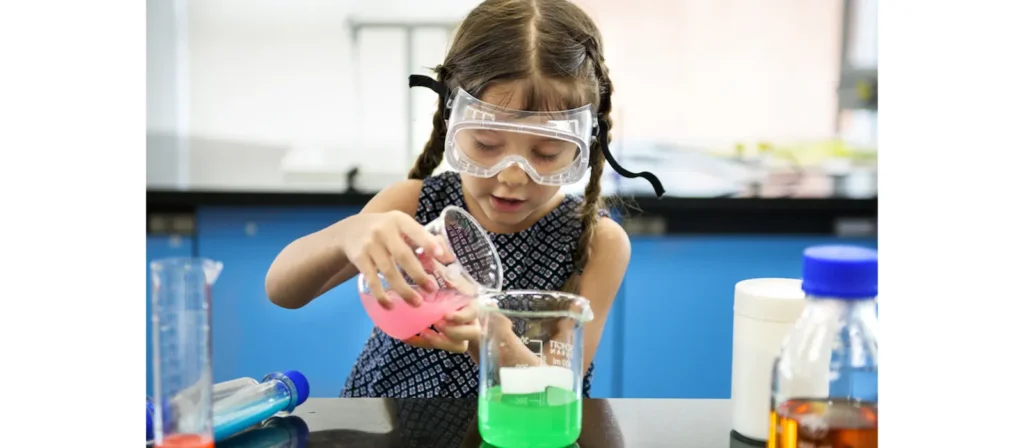
Recommended Furniture and Materials
- Waterproof Sensory Table
Ideal for messy experiments, it features a deep, washable basin for mixing, pouring, and combining materials like baking soda, water, and food coloring. - Transparent Trays and Mixing Cups
Individual trays help contain mess while providing a clear view of experiments. Small measuring cups and droppers promote precision. - Storage Drawers with Labels
Organizes science supplies like vinegar, salt, pipettes, funnels, food coloring, and safety goggles into labeled drawers. - Cleanup Station with Apron Hooks
It includes hooks for aprons, shelves for towels, and easy access to trash or recycling. This unit teaches responsibility and self-care. - Visual Experiment Cards Stand
Holds step-by-step picture cards for independent exploration. Helps children follow sequences and predict outcomes.
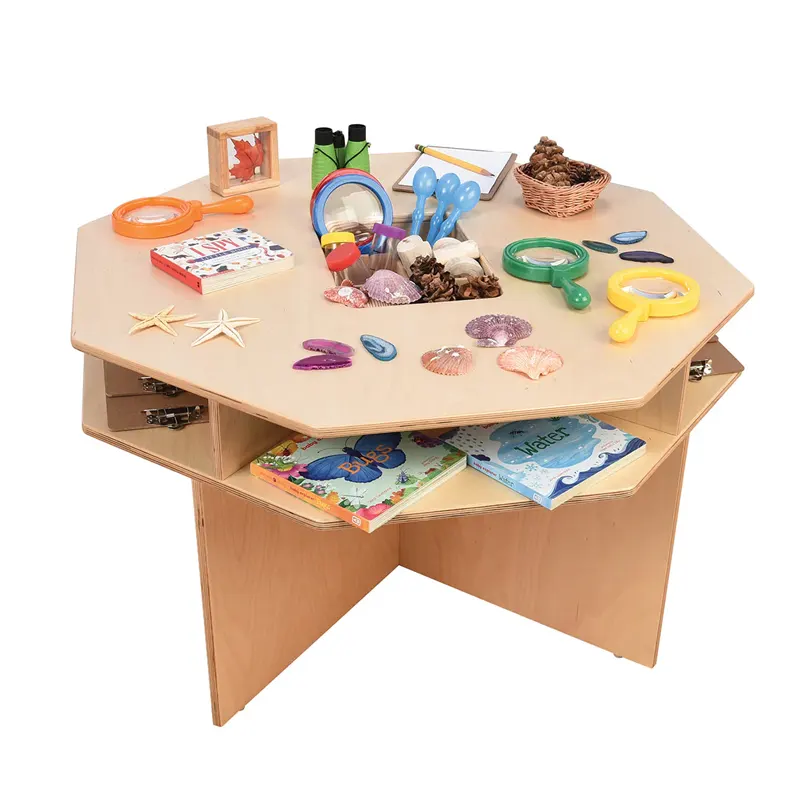
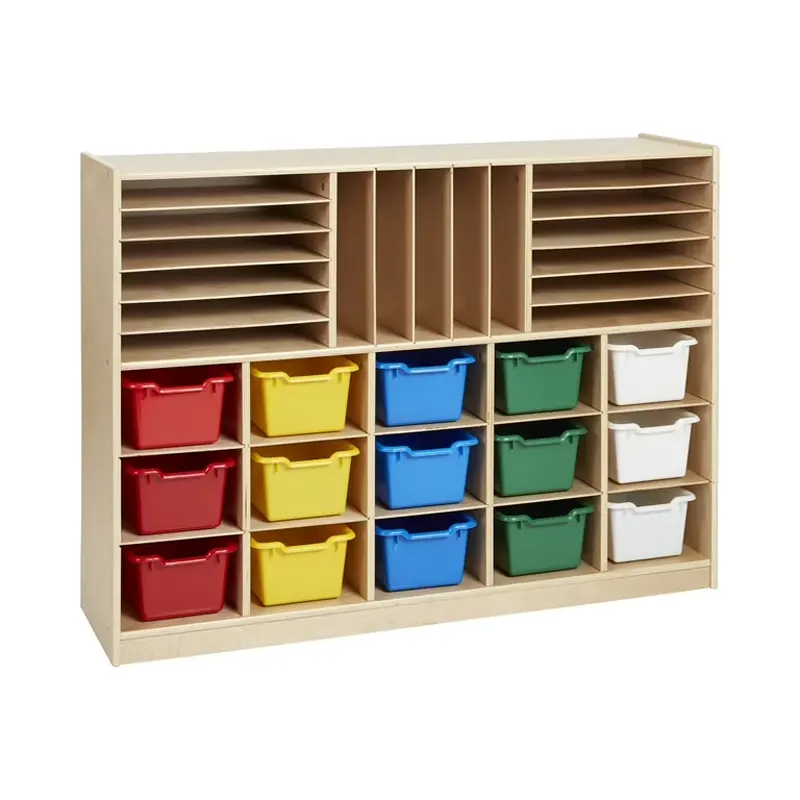
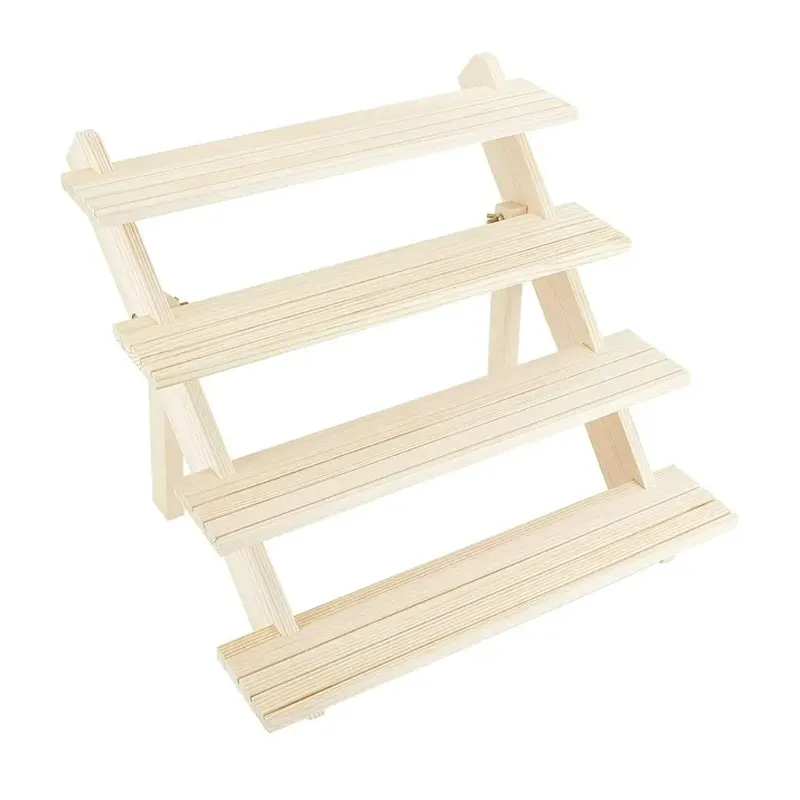
Layout Suggestions
Set this station near a sink or an area with easy-to-clean floors. Use mats to reduce slips and simplify cleanup. Include a “mixing station” sign and rotate themes—color mixing, foam play, sink-or-float tests—to maintain engagement. Provide laminated “What do you notice?” cards to prompt scientific thinking. Offer goggles and lab coats for playful immersion.
4. Weather & Environment Area
This zone helps children understand weather patterns, seasons, and environmental care. It supports daily observation and recording routines and builds early environmental awareness. Children learn how to relate scientific ideas to the world around them.
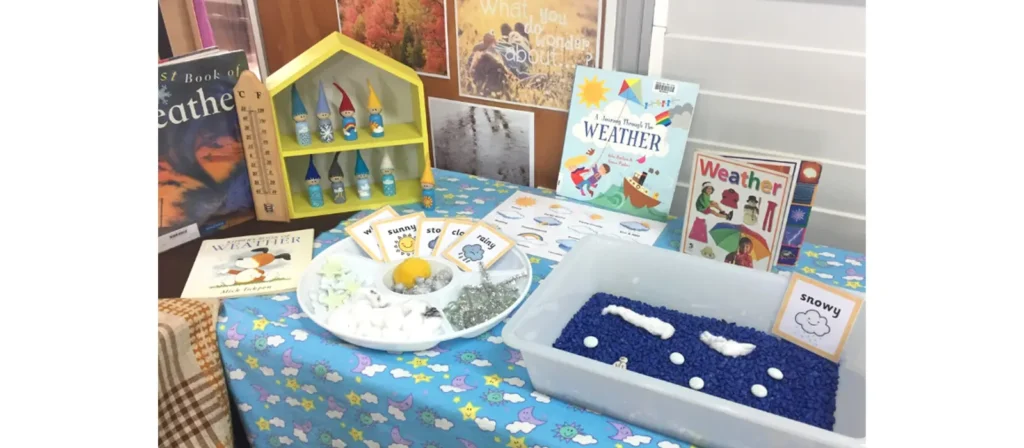
Recommended Furniture and Materials
- Weather Chart Board
It includes movable parts for the sun, clouds, wind, and precipitation. It encourages active participation during circle time or morning meetings. - Mini Whiteboard with Thermometer Clip
It allows students to log daily temperatures, draw cloud shapes, or mark wind direction, enhancing their real-time data collection skills. - Seasonal Display Shelf
Rotating shelf with seasonal objects—leaves, snowflakes, flowers, or shells—to help children understand cyclical change. - Recycling Sorting Station
Child-friendly bins labeled for plastic, paper, and metal. Reinforces environmental responsibility through action. - Eco Book Rack
Displays storybooks about recycling, weather, and nature. Supports language development alongside science content.


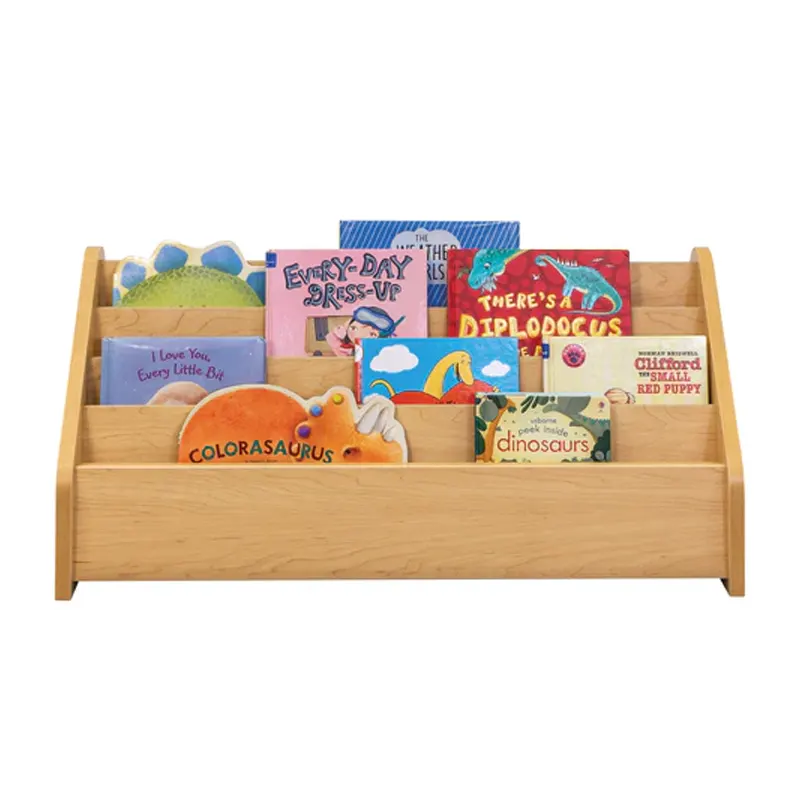
Layout Suggestions
Place near a window or door where children can observe the sky directly. Add rain boots, scarves, or sun hats as dress-up options for seasonal role-play. Display photos of local weather phenomena. Set up a “green helper” chart where children monitor classroom recycling or plant watering tasks. Integrate this space into daily routines with a rotating “weather reporter” role.
5. Investigation & Recording Area
This quiet zone is where children document their findings, reflect on their experiences, and develop scientific communication. It simultaneously encourages drawing, writing, labeling, and connecting ideas, supporting literacy and inquiry.
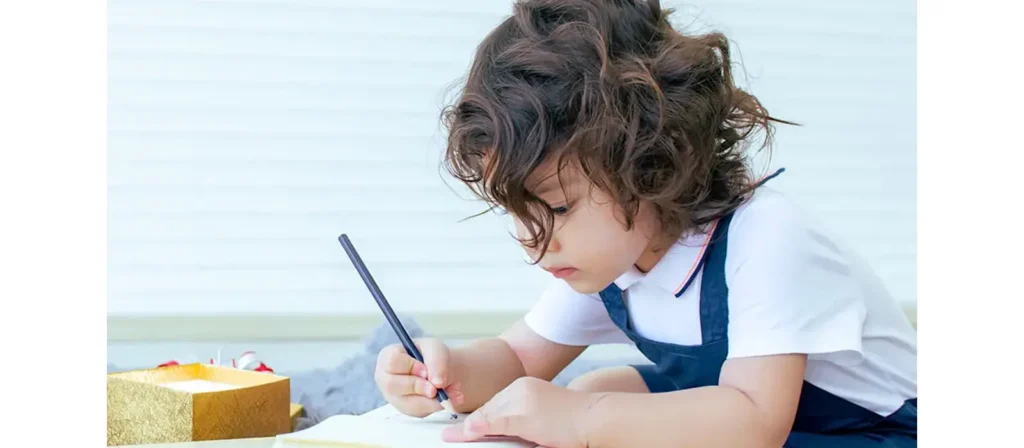
Recommended Furniture
- Child-Sized Writing Desk with Chairs
Provides a calm, focused space for journaling or drawing observations from science activities. - Clipboard and Journal Storage Tray
Holds each child’s science notebook or clipboards in labeled bins, keeping materials organized and accessible. - Work Display Board
A corkboard or magnetic board showcases drawings, observation notes, and “hypotheses” that children make. - Reference Picture Rack
Includes nature photos, labeled diagrams, and vocabulary cards children can use while writing. - Pencil and Tool Caddy
Stores markers, rulers, scissors, tape, and other recording tools in a neat, visible layout.
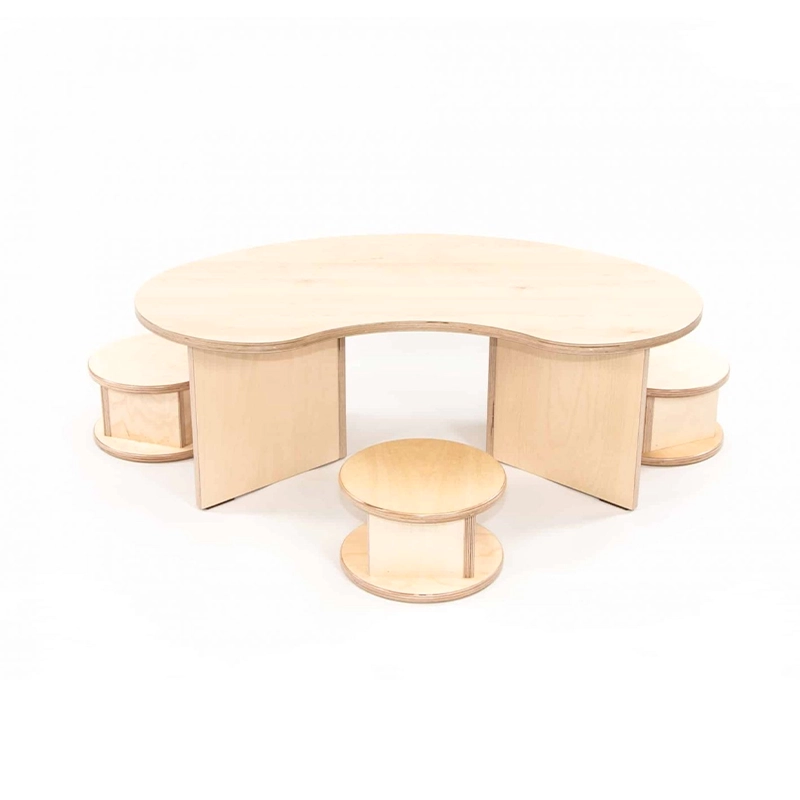
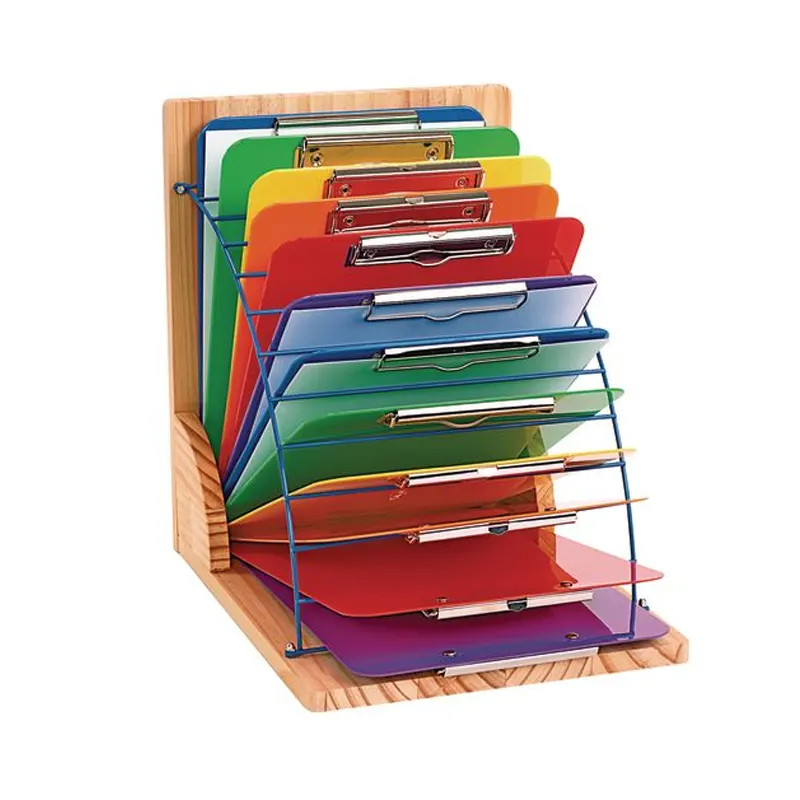
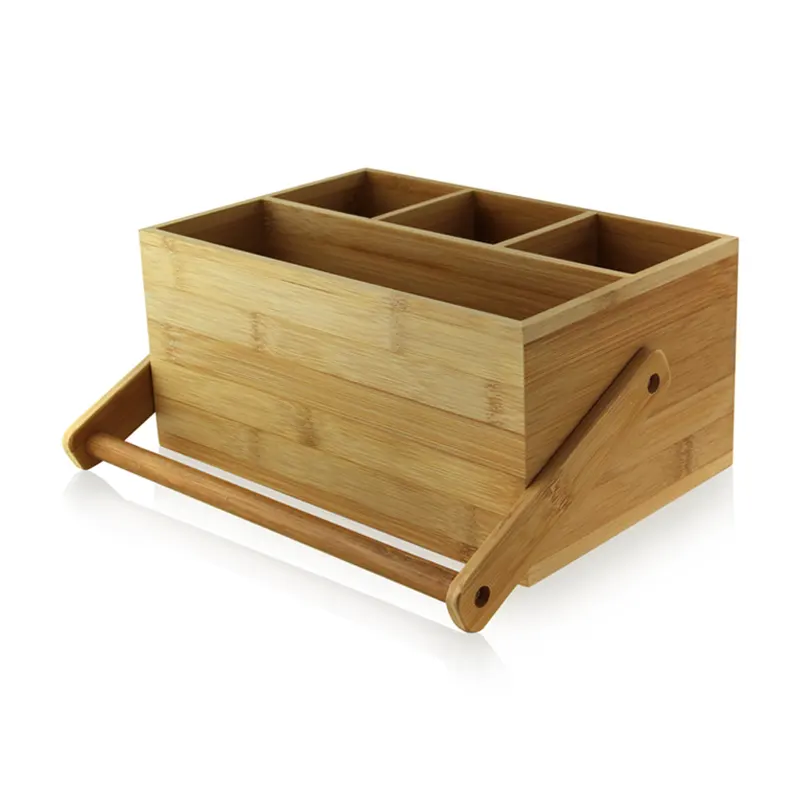
Layout Suggestions
Place this area in a quiet corner, away from active sensory or physical stations. Use soft dividers (like a bookshelf) to create a cozy “scientist corner.” Add soft lighting and calming colors to foster focus. Introduce weekly prompts such as “What changed this week?” or “What surprised you today?” Display finished journals at the end of each month to celebrate progress.
Science Center Activities for Preschoolers
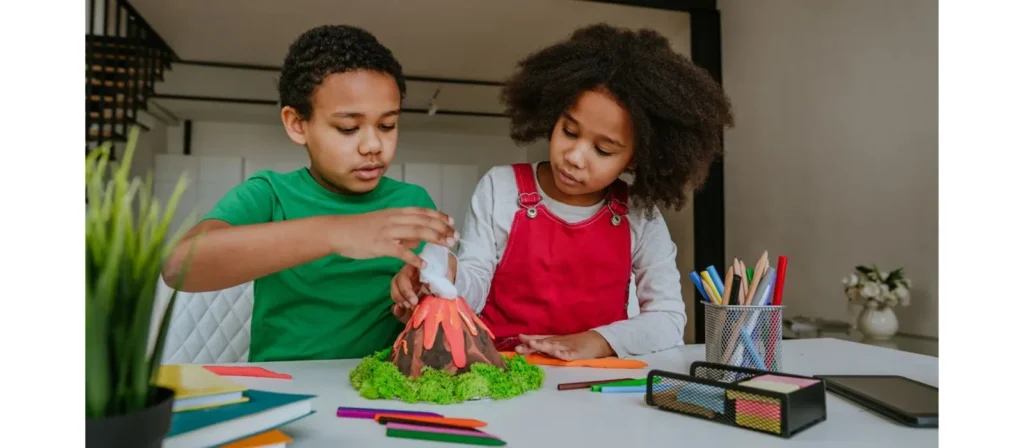
The preschool science center is a paradise for stimulating children’s creativity and scientific thinking. Through a series of fun and creative activities, children can deeply explore the mysteries of science in a relaxed and pleasant atmosphere.
Simple Experiment Activities
Water-related Experiments
Preschoolers can engage in simple water-based experiments. For example, the “Sink or Float” experiment. Provide them with a basin filled with water and various small objects such as wooden blocks, plastic toys, metal spoons, and rubber balls. Let the children predict which items will sink and float, and then have them test their predictions. This activity helps them understand the concept of buoyancy. Another water experiment could be “Mixing Colors in Water.” Give the children transparent cups filled with water and some drops of food coloring. They can observe how different colors blend when mixed, exploring the properties of liquids and color interaction.
Magnet Experiments
Introduce magnets to preschoolers. One activity is the “Magnet Attraction Hunt.” Hide small magnetic and non-magnetic objects around the classroom or play area. Provide the children with magnets and have them search for the objects that the magnets can attract. This activity teaches them about magnetic force and the properties of magnetic and non-magnetic materials. They can also create simple magnetic art. Place a piece of paper on a table and put some iron filings on it. Then, use a magnet under the paper to move the iron filings and create different patterns.
Nature Exploration Activities
Plant Observation
Set up a small plant science corner in the preschool. Have the children plant seeds, such as bean seeds, in small pots filled with soil. They can water the plants regularly and observe the growth process over time, including the sprouting of seeds and the growth of stems and leaves. This activity helps them understand the life cycle of plants and the importance of water and sunlight for plant growth. They can also draw pictures of the plants at different growth stages to record their observations.
Animal Habitat Study
Create a small animal science area, like a bug hotel or a small fish tank. For a bug hotel, use materials like twigs, leaves, and small pieces of bark to build a shelter. Let the children observe the insects that visit or take up residence. If a fish tank exists, they can learn about fish behavior, such as swimming, eating, and interacting. They can also learn about the necessary elements of an animal’s habitat, like water quality for fish or the type of shelter insects need.
Sensory Science Activities
Texture Sorting
Collect objects with different textures, such as smooth stones, rough sandpaper, furry fabric, and bumpy sponges. Divide the children into groups and give each group a set of these objects. Have them sort the objects based on texture. This activity helps them develop their sense of touch and understand different textures. They can also describe the textures in their own words, enhancing their language skills.
Sound Exploration
Gather a range of musical instruments like bells, drums, and xylophones, as well as common objects that can make sounds, such as empty cans and wooden spoons. Let the children explore how different objects make different sounds. They can experiment with hitting, shaking, or scraping the objects to create sound effects. This activity helps them understand the concept of sound production and the differences in sound qualities.
Everyday Materials in Your Preschool Science Center
1. Measuring Tools
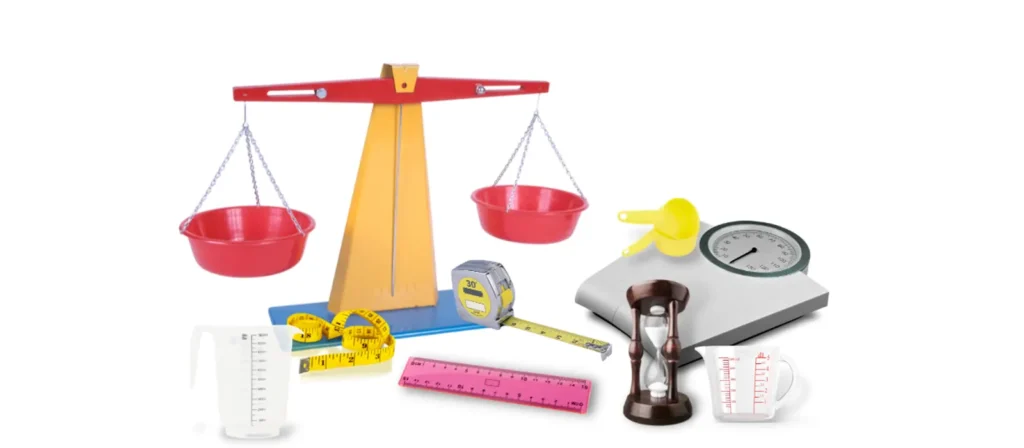
- Magnifying Glass: Preschoolers can use a magnifying glass to closely observe everyday objects, such as the texture of fabrics or the details of toy components. This activity stimulates their curiosity and hone their observation skills.
- Rulers: Encourage them to measure the length and height of objects in the science center, such as tables or plants, helping them understand length concepts and the practical use of measurement tools.
- Thermometers: Allow kids to learn about temperature and its changes in different environments.
- Balance Scales and Measuring Cups: Introduce basic weight, volume, and comparison concepts.
2. Household Items
- Plastic Containers: Various sizes and shapes of plastic containers can be used for activities such as stacking to learn about balance or filling with water/sand to explore volume. They are easy to clean with water and sponges, teaching children about tidying up after activities.
- Compasses: Teach children about direction and navigation.
- Flashlights and Mirrors: Use for light and shadow experiments, teaching about reflection and refraction.
- Spoons and Forks: These can be used for simple experiments, like mixing substances or sorting small objects. Afterward, children can practice cleaning them with soap and brushes, reinforcing the habit of maintaining cleanliness.
- Paper Towels and Sponges: Children can use these to clean water spills on different surfaces, exploring absorbency while learning the importance of promptly cleaning up messes.
- Broom and Dustpan: Provide these tools to clean small areas after experiments, such as sweeping up crumbs or paper scraps. This activity strengthens fine motor skills and emphasizes keeping the environment tidy.
- Wet Wipes: Perfect for quick clean-ups, wet wipes allow children to clean their hands or light surface stains during experiments. This helps them learn about using appropriate tools for specific cleaning needs.
Natural Materials in Your Preschool Science Center
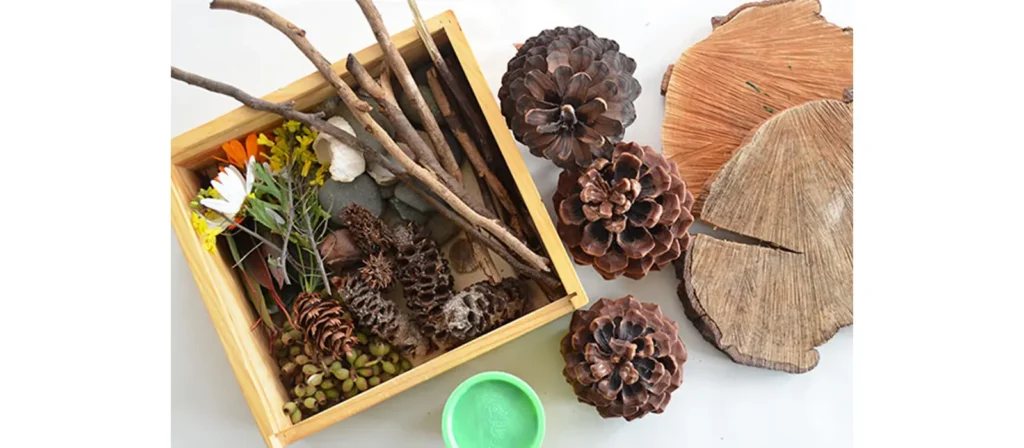
1. Rocks and Minerals
- Different Types of Rocks: Collect various outdoor rocks and bring them to the science center. Children can sort the rocks by size, color, or texture. They can also use a magnifying glass to closely examine the rocks and notice their surface and pattern differences.
- Mineral Samples: If possible, obtain mineral samples like quartz or mica. Let the children observe the shine and color of the minerals. They can compare the minerals to the rocks and discuss the similarities and differences. This helps them learn about the natural world and the variety of materials found in nature.
- Sand and Soil: Provide containers filled with sand and soil. Preschoolers can play with the sand, building small structures or making patterns. They can also plant seeds in the soil and observe the changes over time, learning about the role of soil in plant growth.
2. Plants and Plant Parts
- Leaves: Collect leaves from different trees and plants. Children can sort the leaves by shape, size, or color. They can also use leaves to make prints by placing them under a piece of paper and rubbing them with a crayon. This activity helps them notice the details of leaves and their unique characteristics.
- Flowers: Bring in some flowers and let the children observe the different parts of a flower, such as the petals, stamens, and pistils. They can also make flower arrangements and talk about the colors and scents of the flowers. This introduces them to the beauty and complexity of plants.
- Seeds: Provide a variety of seeds like beans, sunflower seeds, or pumpkin seeds. Children can plant the seeds in pots and watch them grow. They can also sort the seeds by size and shape and discuss where they come from and how they grow into plants.
Living Things for Your Preschool Science Center
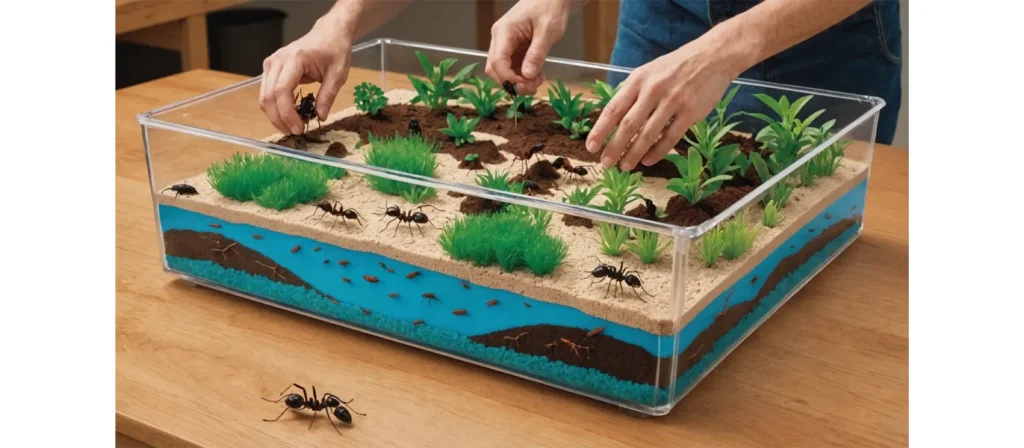
1. Insects and Small Creatures
- Butterflies and Caterpillars: If possible, have a butterfly garden or a small enclosure where children can observe the life cycle of butterflies. They can watch the caterpillars eat and grow, then form a chrysalis and finally emerge as butterflies. This is a great way to teach them about the transformation of living things.
- Ant Farms: Set up an ant farm in the science center. Children can observe the ants as they build tunnels and work together. They can learn about the social behavior of ants and how they live in colonies.
- Earthworms: Provide a container with soil and earthworms. Preschoolers can watch the earthworms move through the soil and learn about their role in the environment, such as helping to aerate the soil.
2. Fish and Aquatic Life
- Small Fish Tank: Have a small fish tank with a few colorful fish. Children can observe the fish swimming, eating, and interacting with each other. They can learn about fish needs, such as clean water and proper food.
- Aquatic Plants: Add some aquatic plants to the fish tank. Preschoolers can notice how the plants grow in water and how they provide a habitat for the fish. They can also learn about the oxygen the plants produce and its importance for aquatic life.
- Water Snails: Include water snails in the fish tank. Children can observe the slow movement of the snails and how they interact with the other living things in the tank. This helps them understand the diversity of aquatic life.
Transform Your Classroom with Custom Furniture Solutions
Seasonal Ideas for Preschool Science Center
Seasonal themes keep preschool science centers fresh, engaging, and aligned with what children observe in their environment. Tailoring activities and materials to each season sparks curiosity and helps children connect their learning to real-life changes around them. Here are ideas for each season to make your preschool science center truly dynamic:
Spring Preschool Science Center
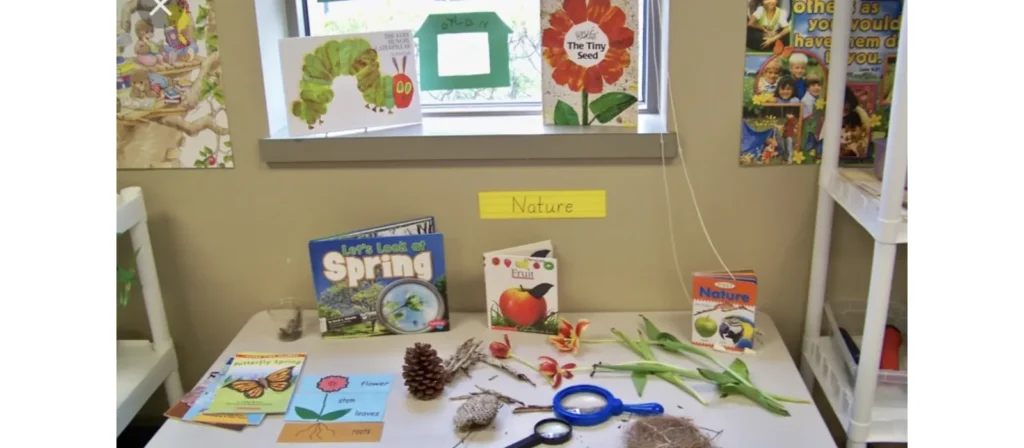
Spring is a time of growth and renewal, making it perfect for exploring life cycles and weather changes.
Hands-On Activities:
- Seed Planting: Provide small pots, soil, and seeds like beans or sunflowers. Allow children to plant their seeds and observe their growth over time.
- Rain Exploration: Set up a mini water cycle experiment using a clear plastic bag, water, and a sunny window. Teach children how rain forms.
- Insect Observation: Include toy insects or a live caterpillar-to-butterfly kit to teach about metamorphosis.
Summer Preschool Science Center

Summer is ideal for exploring water, light, and outdoor activities. It’s also a great time to teach about heat and how it affects different objects.
Hands-On Activities:
- Water Play: Use sensory bins filled with water for floating and sinking experiments. Add sponges, small boats, and plastic animals for exploration.
- Shadow Exploration: Take children outside to observe and draw shadows at different times of the day.
- Solar Experiments: Place ice cubes in the sun and shade to observe melting rates. Discuss how heat affects different materials.
Autumn Preschool Science Center
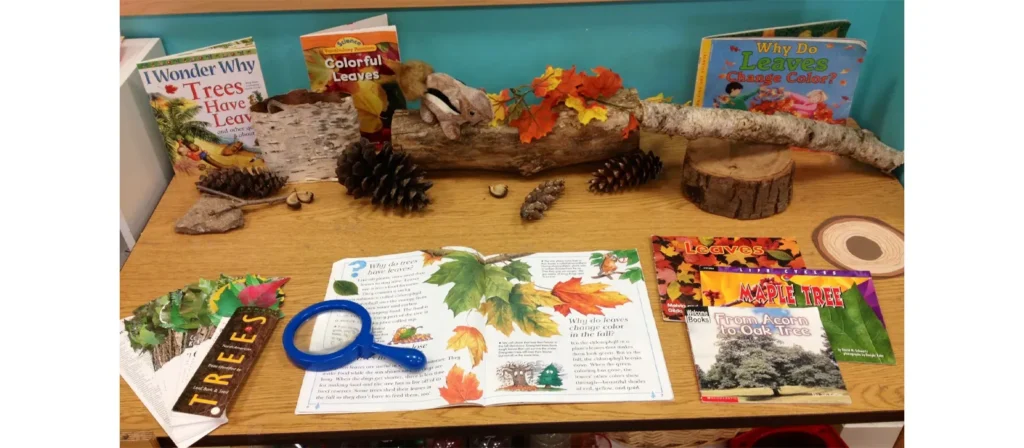
Autumn is full of natural changes, making it a perfect opportunity to explore trees, leaves, and seasonal foods like pumpkins.
Hands-On Activities:
- Leaf Identification: Collect leaves in different colors and shapes. Use magnifying glasses to study their veins and edges.
- Pumpkin Science: Cut open a pumpkin to explore its seeds and pulp. Let children count the seeds or plant them to observe growth.
- Wind Experiments: Use simple materials like tissue paper or lightweight objects to explore how wind moves different items.
Winter Preschool Science Center

Winter brings unique opportunities to explore concepts like freezing, melting, and adaptation in nature.
Hands-On Activities:
- Snow Science: Bring snow indoors or create “fake snow” using baking soda and water. Let children mold it while discussing its properties.
- Ice Play: Provide ice cubes of different shapes and sizes. Add salt and watch how it affects melting rates.
- Animal Adaptations: Use pictures or toy animals to show how animals adapt to cold weather (e.g., hibernation, fur growth).
Maintaining and Enhancing Your Science Center
A vibrant and continuously developing preschool science center is inseparable from careful maintenance and continuous improvement. This ensures the safety and order of the science center and enables it to always maintain its attractiveness to children and promote their scientific exploration journey.
Regular Maintenance and Inspection
- Material Organization and Cleaning: Arrange a weekly fixed time to organize the materials in the science center. Sort experimental equipment, specimens, tools, etc. neatly, and clean up dust and debris. For materials prone to damage, check for signs of damage and repair or replace them promptly.
- Space Cleaning and Safety Inspection: Regularly clean the floors and tables of the science center to keep the environment clean. At the same time, check whether power sockets and electrical equipment are working properly to ensure no safety hazards. Inspect the stability of furniture to prevent it from toppling and harming children.
Updating and Supplementing Materials
- Update According to Interests and Needs: Observe children’s activities in the science center and update the materials promptly according to their interests and exploration needs. If children are particularly interested in a certain type of experiment, increase relevant experimental equipment and materials; if it is found that some materials are used less frequently, replace them.
- Introduce New Science-themed Materials: Pay attention to new trends and hot topics in science education and introduce relevant materials. For example, when new space exploration achievements exist, models and popular science books about the universe and planets should be added to stimulate children’s desire to explore new fields.
Improving Interaction and Engagement
- Set up an Interactive Display Area: Open an interactive display area in the science center to showcase children’s scientific experimental results, creative works, etc. Encourage children to share their discoveries and experiences, improving their expression ability and self-confidence.
- Hold Science Activity Days: Regularly hold science activity days and invite parents or children from other classes to participate. Set up science competitions, experimental performances, etc., to increase the fun and attractiveness of the science center, allowing more children to feel the charm of science.
Getting Feedback
Actively establish multiple feedback channels. Communicate with children to understand their preferences and expectations regarding activities and materials. Regularly distribute questionnaires to parents to collect their satisfaction and suggestions about the science center. Also, teaching seminars should be organized so that teachers can obtain feedback.
Conclusion
A preschool science center is a powerful tool for early education. Combining hands-on activities, interactive displays, and creative themes creates an inviting space that sparks curiosity and fosters lifelong learning. With the right setup and materials, you’ll inspire preschoolers to explore, experiment, and embrace the wonders of science.
Discover Our Full Range of Products
Get access to our comprehensive catalog featuring top-quality furniture and play equipment for kindergartens and schools.

